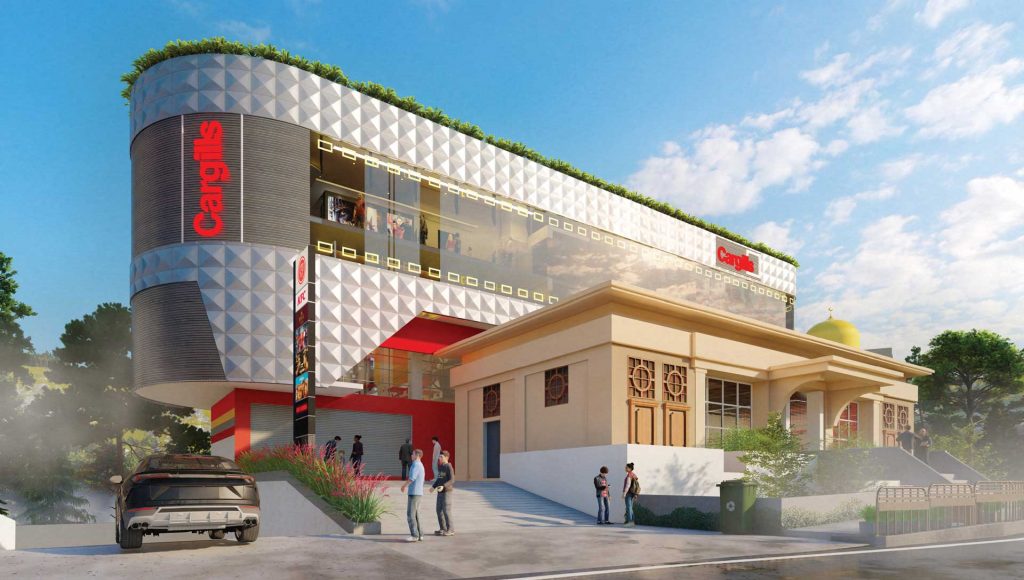
BETTER BUILT ENVIRONMENT
The importance of dreaming big but also taking practical steps
Russell Dandeniya in conversation with Nicola Jayasundera
Architecture is a very sensitive subject,” says Russell Dandeniya, adding: “We have to transplant what we conceive into the minds of others appropriately with sequential functional feeling and articulation of spaces to obtain optimal value for the client on his or her investment.”
The Principal Architect at Russell Dandeniya Chartered Architects, he is also the Director of RDC Architects and leads an award-winning team that has won national and international recognition including several prestigious international awards from the American Institute of Architects (AIA).
These include an Honour Award for Open International Architecture and a ‘jury special’ Sustainable Future Award for the Jiffy Office Building.
Q: Are there any major obstacles to the development of architecture, design and construction in Sri Lanka today?
A: The government and key private sector corporate entities don’t understand the value of architecture, its essence, and impact on society and the nation as a whole.
When you think of any country, it’s the iconic landmarks that come to mind… for instance, Sydney Opera House, Great Pyramid of Giza, Great Wall of China, Taj Mahal, Jetavanaramaya, Eiffel Tower and Statute of Liberty.
Therefore, architecture should be given its place by stakeholders in both the state and corporate sectors as an important element of national development.
We have the opportunity and potential to be the best in the region. If the government wants Sri Lanka to be ‘The Wonder of Asia’ and a major tourist destination, the built environment of the future is of paramount importance. And the work of architects should be recognised to improve this built environment in our country.
Award-winning Sri Lankan architects should have an opportunity to design nationally important buildings for design competitions. Award such projects to talented local hands instead of making it an uneven playing field by the participation of foreign consultants who are invited to be major players. Such recognition of local architects will also offset the low quantum of work that’s available to our professionals.
Q: What’s your view on current policies in this field?
A: An inherent problem is that current policies don’t complement each other on clarity of implementation. The recent Urban Development Authority (UDA) regulation amendment and import restrictions on building materials are good but the manner of their enforcement is unsatisfactory.
We are a country that doesn’t produce a single small nail and 70 percent of building materials are imported. Without proper coordination on imported items – particularly since no alternative local products or materials are available – can Sri Lanka enforce import restrictions as a policy?
How long will it take to startup a nail manufacturing plant? Are policies reliable for long-term planning? Issues such as these are the chief obstacles.
Q: And how do you feel about ongoing urban development?
A: We have missed out on the greater part of a good design ethic in urban development. It’s a mere planning exercise with no extensive consideration for the involvement of architects or urban designers.
Planners have taken their responsibilities for granted and colouring maps alone haven’t helped urbanity. Urban development carries a broader meaning and greater perspective. It should be projected with 3D imagery of what our cities will be in the future.
When we asked urban developers who are conversant with all the regulations what sort of city or country they envisage in 10-15 years’ time, they didn’t have a response. But architects have to create 3D models for each and every urban development project in the country.
We need to go beyond 2D map colouring with greater input from urban designers, architects, landscape architects and planners – together with 3D visuals.
I believe that the UDA can learn a lot from the Port City development project in terms of how they conducted an international competition for an urban design master plan.
Q: Do you have a message that you’d like passed on to policymakers?
A: For nationally important buildings, the government should seek the best designs through competitions conducted by the Sri Lanka Institute of Architects (SLIA). This provides equal opportunity and access to larger projects while overcoming the low quantum of work due to the pandemic.
The Colombo Port City Economic Commission should offer architects, engineers and quantity surveyors an opportunity for capacity building through knowledge transfers, sharing and dissemination by allowing them to work in Sri Lanka’s first ever planned city.
During 73 years of independence, we have had many plans and regulations but the outcomes are still chaotic. Planning regulations alone haven’t helped. A proper planning approach is needed when we’re creating a great built environment.
But what do we see?
Colouring of plans, establishing some height limits, and priority given to parking and road widening! A liveable city is for people, not vehicles – so we will continue with the same disorderly cities and built environment.
To reduce visual and environmental pollution, the removal of advertising billboards and hoardings – irrespective of the loss of tax revenue – will suffice. Over a few months, we can beautify Sri Lanka without any expenditure if a policy is enforced to plant trees along the streets. By leaving provision for future road widening, we can create green walks around our streetscape.
These are modest activities, which will have a great impact and can be adopted during difficult times without any great expenditure.
